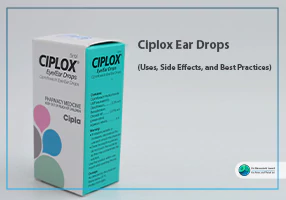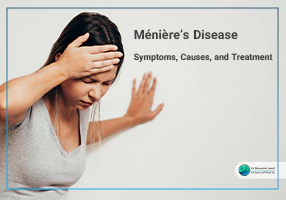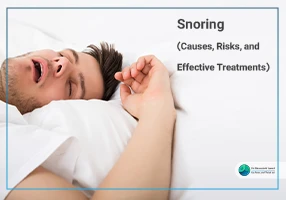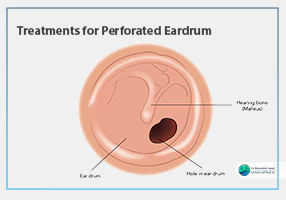Bell’s Palsy: Symptoms, Causes, Treatment, and Recovery Guide
Bell’s Palsy, also known as idiopathic facial palsy, is a condition that causes sudden, temporary weakness or paralysis of the facial muscles, typically on one side of the face. Named after Scottish anatomist Charles Bell, who first described it, this condition results from inflammation, swelling, or compression of the seventh cranial nerve (facial nerve). While the exact cause remains unclear, it is often linked to viral infections or other triggers. This comprehensive guide covers the symptoms, causes, diagnosis, treatment options, recovery process, and tips for living with Bell’s Palsy.
![]() What Is Bell’s Palsy?
What Is Bell’s Palsy?
Bell’s Palsy occurs when the facial nerve, responsible for controlling muscles involved in facial expressions, becomes inflamed or damaged. This leads to symptoms like facial drooping, difficulty closing the eye, or challenges with smiling on the affected side. The condition is usually temporary, with most people experiencing significant improvement within weeks to months. It can affect anyone but is most common in individuals aged 16 to 60. In rare cases, it may impact both sides of the face or persist longer.
Symptoms of Bell’s Palsy
Symptoms of Bell’s Palsy typically appear suddenly, often within hours or overnight, and may follow a recent illness like a cold, ear infection, or eye infection. The severity ranges from mild weakness to complete paralysis of one side of the face. Common symptoms include:
- Facial drooping: One side of the face sags or feels stiff, making it hard to smile, frown, or make facial expressions.
- Difficulty closing the eye: The affected eye may not close fully, leading to dryness or irritation.
- Drooling: Weakness in facial muscles can cause saliva to pool or drip from the mouth.
- Trouble eating or drinking: Chewing or swallowing may be challenging due to muscle weakness.
- Dryness of the eye or mouth: Reduced tear or saliva production can cause discomfort.
- Facial muscle twitching: Involuntary spasms or tightness in the face.
- Pain or discomfort: Aching around the jaw, ear, or behind the ear on the affected side.
- Headaches: Mild to moderate headaches may occur.
- Loss of taste: Altered or reduced taste sensation on the affected side of the tongue.
- Sensitivity to sound: Sounds may feel louder in the ear on the affected side (hyperacusis).
- Eye irritation: Increased sensitivity or discomfort in the affected eye.
Important Note: If you experience sudden facial weakness, seek medical attention immediately, as symptoms may mimic serious conditions like stroke or brain tumor.
Causes and Risk Factors of Bell’s Palsy
Bell’s Palsy results from inflammation or compression of the seventh cranial nerve, which travels through a narrow bony canal from the brain to the face. Damage to the nerve’s protective sheath disrupts signals to facial muscles, causing weakness or paralysis. While the exact cause is often unknown, it is frequently associated with viral infections. Potential triggers include:
- Viral infections:
- Herpes simplex virus (HSV): Linked to cold sores or genital herpes.
- Herpes zoster virus: Causes chickenpox and shingles.
- Epstein-Barr virus: Associated with mononucleosis.
- Cytomegalovirus (CMV): A common viral infection.
- Adenovirus: Linked to respiratory illnesses.
- Rubella: Causes German measles.
- Mumps virus: Leads to mumps infection.
- Influenza B: Associated with flu.
- Coxsackievirus: Causes hand, foot, and mouth disease.
- Bacterial infections: Lyme disease, caused by tick-borne bacteria, may trigger Bell’s Palsy.
- Other conditions: Diabetes, hypertension, sarcoidosis, Guillain-Barré syndrome, myasthenia gravis, or multiple sclerosis can increase risk.
- Physical factors: Trauma or exposure to toxins may damage the facial nerve.
Risk Factors: Certain groups are more prone to Bell’s Palsy, including:
- Pregnant women: Especially in the third trimester or early postpartum period.
- People with diabetes: Due to nerve vulnerability.
- Individuals with respiratory infections: Recent colds or flu increase risk.
- Family history: A genetic predisposition may play a role.
Diagnosing Bell’s Palsy
 Diagnosing Bell’s Palsy involves a combination of clinical evaluation and tests to rule out other conditions. Your doctor will:
Diagnosing Bell’s Palsy involves a combination of clinical evaluation and tests to rule out other conditions. Your doctor will:
- Assess facial muscle strength: Checking for asymmetry in smiling, blinking, or other expressions.
- Review your medical history: Asking about recent infections, symptoms onset, and family history.
- Perform neurological exams: Testing reflexes, sensation, and muscle function to differentiate from stroke or tumors.
- Order diagnostic tests, if needed:
- Blood tests: To check for viral or bacterial infections (e.g., Lyme disease, HSV).
- MRI or CT scan: To examine the facial nerve or rule out tumors or strokes.
- Electromyography (EMG): Measures nerve activity to assess damage severity.
- Nerve conduction studies: Evaluate how well the facial nerve transmits signals.
Key Point: Early diagnosis is crucial to start treatment within 72 hours of symptom onset for the best outcomes.
Treatment Options for Bell’s Palsy
Most cases of Bell’s Palsy resolve spontaneously within 3–6 months, but treatments can speed recovery and reduce symptoms. Options include:
Medications
- Corticosteroids: Prednisolone, taken within 72 hours of symptom onset, reduces nerve inflammation and improves recovery rates. Studies show it can significantly reduce symptoms after 12 months by inhibiting inflammatory substances like prostaglandins and leukotrienes.
- Antiviral drugs: Medications like acyclovir or valacyclovir may be prescribed if a viral infection (e.g., herpes) is suspected, though their effectiveness is debated.
- Pain relievers: Over-the-counter drugs like ibuprofen or acetaminophen help manage facial or ear pain.
- Eye drops or ointment: Artificial tears or lubricating ointments prevent dry eye and protect the cornea.
Home Care and Self-Management
- Warm compresses: Applying a warm, moist towel to the face can relieve pain and relax muscles.
- Facial massage: Gentle massage stimulates blood flow and reduces muscle stiffness.
- Physical therapy exercises: Simple exercises, like puffing cheeks or raising eyebrows, strengthen facial muscles and improve coordination.
- Eye protection: Use an eye patch or tape the eyelid closed at night to prevent dryness or injury.
Advanced Treatments for Severe Cases
- Facial retraining therapy: A specialized form of physical therapy that teaches exercises to improve muscle control and symmetry. This can enhance facial movement and expression.
- Botox injections: Used to relax overactive muscles or reduce involuntary spasms (synkinesis) in persistent cases.
- Plastic surgery: In rare cases, reconstructive surgery improves facial symmetry, though it doesn’t address nerve damage.
Alternative and Complementary Therapies
Some patients explore alternative treatments, though evidence for their efficacy is limited:
- Acupuncture: May stimulate nerve function and reduce pain, but results vary.
- Biofeedback: Helps patients control involuntary muscle movements.
- Vitamin therapy: Supplements like vitamin B12, B6, or zinc may support nerve health, but consult your doctor first.
- Yoga or relaxation techniques: Can reduce stress, which may indirectly aid recovery.
- Electrical stimulation: Used in some cases to stimulate facial muscles, but its benefits are not well-established.
Caution: Always consult your healthcare provider before trying alternative therapies, as they may not be suitable for all patients.
Potential Complications of Bell’s Palsy
 Most people recover fully from Bell’s Palsy without complications, but severe or prolonged cases may lead to:
Most people recover fully from Bell’s Palsy without complications, but severe or prolonged cases may lead to:
- Permanent facial nerve damage: Rarely, the seventh cranial nerve may not fully recover, causing lasting weakness.
- Eye complications: Chronic dry eye can lead to infections, corneal ulcers, or, in extreme cases, vision loss.
- Synkinesis: Involuntary movements, such as the eye closing when smiling, due to nerve miswiring during recovery.
Prevention Tip: Early treatment with corticosteroids and proper eye care can significantly reduce the risk of complications.
Recovery Timeline and Expectations
Recovery from Bell’s Palsy varies based on the severity of nerve damage:
- Mild cases: Improvement often begins within 2–3 weeks, with full recovery in 3–6 months.
- Severe cases: Recovery may take 6–12 months, with some residual weakness in rare cases.
- Persistent symptoms: A small percentage of patients may have lasting symptoms or partial recovery.
Key Tip: Starting treatment within 72 hours of symptom onset can speed recovery and reduce complications. Regular follow-ups with your doctor ensure optimal outcomes.
Living with Bell’s Palsy: Practical Tips
Living with Bell’s Palsy can be challenging, especially in the early stages. Here are practical tips to manage symptoms and improve quality of life:
- Protect your eyes: Use artificial tears during the day and lubricating ointment at night. Wear glasses or sunglasses to shield the eye from dust or wind.
- Maintain oral hygiene: Brush and rinse carefully to prevent food buildup on the affected side, which can occur due to drooling or chewing difficulties.
- Eat soft foods: Opt for smoothies, mashed vegetables, or soups if chewing is hard. Chew on the unaffected side to reduce strain.
- Manage stress: Stress can worsen symptoms. Practice deep breathing, meditation, or gentle yoga to stay calm.
- Seek support: Join support groups or speak with a counselor to address emotional challenges, as facial changes can affect self-esteem.
Preventing Bell’s Palsy
Since the exact cause of Bell’s Palsy is often unclear, prevention is challenging. However, you can reduce your risk by:
- Managing underlying conditions: Control diabetes or hypertension with diet, exercise, and medication.
- Avoiding infections: Get vaccinated for influenza, shingles, or mumps to reduce viral risks.
- Protecting against trauma: Avoid head or facial injuries by wearing protective gear during high-risk activities.
- Maintaining a healthy immune system: Eat a balanced diet rich in vitamins C and D, stay active, and get adequate sleep.
Conclusion: Navigating Bell’s Palsy with Confidence
Bell’s Palsy can be a distressing condition, but with prompt diagnosis and proper treatment, most patients recover fully within months. By understanding its symptoms, causes, and treatment options, you can take proactive steps to manage the condition and minimize complications. Early intervention with corticosteroids, eye care, and physical therapy is key to a speedy recovery.
For expert care, consult a neurologist or ENT specialist. Professionals like Dr. Masoumeh Saeedi, a leading ENT surgeon with over 5,000 successful procedures and international training, offer valuable expertise in managing facial nerve conditions. Visit Dr. Saeedi’s website for additional resources and personalized support.
Frequently Asked Questions About Bell’s Palsy
No, Bell’s Palsy itself is not contagious. However, it may be triggered by contagious viruses like herpes simplex or influenza. Practicing good hygiene, such as handwashing, can reduce the risk of viral infections.
Yes, recurrence is possible but uncommon, affecting approximately 7–10% of patients. Risk factors like diabetes or a family history may increase the likelihood. Regular medical check-ups can help monitor for recurrence.
Depending on your job, facial weakness or eye dryness may pose challenges, especially in roles requiring public speaking or prolonged computer use. For example, difficulty closing the eye can cause strain during screen time. Use artificial tears frequently and take breaks to rest your eyes. Most patients can return to work within 1–2 weeks with mild symptoms, but consult your doctor for tailored advice, especially for physically demanding jobs.
Yes, though rare in children under 16 years, Bell’s Palsy can occur. Treatment is similar but tailored to the child’s age and weight, often using lower doses of corticosteroids. Consult a pediatric neurologist for guidance.
While no specific diet cures Bell’s Palsy, eating foods rich in anti-inflammatory nutrients (e.g., omega-3s in salmon, antioxidants in berries) may support nerve healing. Soft foods like smoothies, mashed vegetables, or soups are easier to chew if facial muscles are weak. Stay hydrated and avoid excessive sugar or caffeine, which can worsen inflammation or dehydration.
Yes, changes in facial appearance can lead to emotional distress or lowered self-confidence. It’s normal to feel anxious or self-conscious about facial asymmetry. Joining a support group or speaking with a counselor can help. Practice self-care techniques like mindfulness or journaling to manage stress, which may indirectly aid recovery by supporting your immune system.
Stress alone doesn’t cause Bell’s Palsy, but it can weaken the immune system, making you more susceptible to viral triggers. Stress management techniques like meditation or yoga may help lower risk.
Facial weakness may make expressions like smiling difficult, which can affect social interactions. Use clear verbal communication and maintain eye contact (if possible) to convey emotions. If speech is slightly affected, practice slow, deliberate speaking. Working with a speech therapist can improve clarity and boost confidence in conversations.
Driving is generally safe unless eye dryness or incomplete eye closure impairs vision. Use lubricating eye drops before driving and wear sunglasses to protect the affected eye. If you experience headaches or dizziness, avoid driving until these symptoms resolve. Consult your doctor if you’re unsure about your ability to drive safely.
Use artificial tears every few hours and apply lubricating ointment at night. Taping the eyelid closed or wearing an eye patch during sleep prevents corneal damage. Sunglasses protect against dust and wind.
Bell’s Palsy typically doesn’t directly impact balance, but associated symptoms like ear pain or headaches may cause mild disorientation. If you feel unsteady, avoid activities requiring coordination (e.g., climbing ladders) until symptoms improve. If balance issues persist, your doctor may check for related conditions like inner ear infections.
Yes, drooling or difficulty chewing may increase the risk of food buildup or oral infections. Brush and floss carefully, focusing on the affected side. Use an antiseptic mouthwash to maintain oral hygiene. Schedule a dental check-up if you notice issues like gum irritation or difficulty cleaning your teeth.
Related Articles
Online Consultation, Directly with Dr. Saeedi
Ask your question via WhatsApp, and if you wish, Send your photo for a more accurate assessment.
Free Consultation on WhatsApp

 What Is Bell’s Palsy?
What Is Bell’s Palsy?




When should I seek emergency care?
Hello. If severe symptoms such as complete paralysis of one side of the face, inability to close the eye, severe pain, or accompanying symptoms like fever, severe headache, or weakness in other parts of the body occur, you should seek emergency care immediately. These symptoms may indicate a more serious condition requiring urgent evaluation.
Hello I just wanted to ask if bells palsy can go away completely without any medicine or if its always need treatment?
I had something like face weakness few days ago and now its little better but still my smile look weird. I am worried if it will stay like this forever or maybe it just take some more weeks to heal? Also is it true stress or cold wind can cause it? thanks
Hello. Bell’s palsy, especially if mild, can often improve without medication within a few weeks to months. However, if symptoms like facial weakness or an abnormal smile persist, seeing a doctor for evaluation and possible treatment (e.g., corticosteroids) is recommended to speed recovery and prevent permanent issues. Stress or cold exposure may be triggers, but the main cause is usually a virus or facial nerve inflammation.